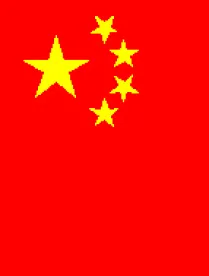China plans to promote consumption and open up its bank card clearing market. This is the outcome of a State Council meeting chaired by Premier Li Keqiang on October 29, 2014. “All qualified domestic and overseas enterprises can file applications for setting up bank-card clearing institutions in China.” The State Council has not given any specifics on foreign investors’ qualification currently, but said that the country must improve management, prevent risks to safeguard the legitimate interests of card users.
Background
During the last decade there were many media reports urging the government to build a new industry access system for bank card clearing institutions. Foreign investors are now allowed to access the China bank card clearing market to boost innovation in the bank card market and payments market. “I believe opening up the clearing market will largely improve services, lower costs and benefit the real economy and consumers,” said Guo Tianyong, a banking researcher with the Central University of Finance and Economics.
If the reason above are not the sole factor that the State Council takes into account, the opinion of WTO Dispute Settlement Body (the “DSB”), after the settlement of China electronic payment services dispute which involves China Union Pay (the “CUP”) and Visa International Service Institution (the “Visa”), has accelerated this opening up of the market. The DSB confirmed the conclusions in the report of the panel in 2012, that China had implemented certain measures which affected electronic payment services market, and China must open up the bank card clearing market no later than August 29, 2015.
This is not the first time the State Council considers opening up the bank card clearing market, but this is the first time the State Council announced a substantial and positive signal to foreign investors.
Bank Card Clearing Institution in China
CUP is the only officially qualified bank card clearing institutions in China currently. CUP does not enjoy domestic monopoly status because all regulations utilized by China do not prohibit foreign investors from entering the Chinese market. However, CUP is the only institution practicing bank card clearing business in China on the official record because through certain circulars[1] published by People’s Bank of China (the “PBOC”), which were recently abolished in 2013, China required all bank cards issued at home to work with the CUP network, meet CUP uniform business specifications and technical standards, carry the CUP logo, and further demanded every merchant and ATM to accept CUP bank cards. The foreign investors such as Visa and MasterCard had no choice but to coordinate with CUP to co-issue bank cards in China, and CUP became the monopoly supplier for the clearing of RMB-denominated payment card transactions.
Does CUP still dominate the whole market since 2013 after the circulars of PBOC that favored CUP were abolished? The truth is “third party payment” companies, Alibaba’s Alipay in particular, providing convenient and free online payment are already participating in the user base of traditional card transactions from 2010.
PBOC issued Administrative Measures for the Payment Services Provided by Non-financial Institutions (Yin Order [2010] No.2), and Detailed Rules for the Implementation of the Administrative Measures for the Payment Services Provided by Non-financial Institutions (Yin Announcement [2010] No. 17) in 2012, which allowed non-financial institutions (including third party payment companies) to apply for a Payment Business Permit from PBOC to conduct bank card acquiring business.
Subsequently in 2013, PBOC issued Administrative Measures for Bank Card Acquiring Business (Yin Announcement [2013] No. 9), which does not explicitly require the bank card business acquirers to coordinate CUP. Many people believed these measures resulted in bank card business acquirers bypassing CUP and providing bank card clearing service by connect merchants and banks directly.
As a general bank card transaction procedure, bank card business acquirers shall transfer the transactions to a clearing institution, and then the clearing institution will transfer such transactions to the bank for settlement. That is said, if the non-financial institutions can bypass CUP after acquiring the bank card transaction, and transfer the transaction to banks directly, then the monopoly position of CUP has already been reduced.
According to the most recently announcement of PBOC on July 15, 2014, over 260 non-financial institutions have obtained the Payment Business Permit since 2011 in five batches separately. Even though CUP owned a subsidiary called China UMS which specializes in bank card acquiring business, the payment business, especially online transactions, has been partitioned by non-financial institutions due to more convenient payment methods and lower service fee.
Bank Card Service Fee
Although the opening up of bank card clearing market is a positive signal, how to win in the following market competition is a more substantial question for foreign investors. One issue to note is that, in China, the service fee of bank card clearing institution is strictly monitored by government. PBOC and National Development and Reform Commission promulgated three regulations[2] to adjust the service fee for bank card clearing. The service fee rate of bank card clearing institutions for each transaction shall be no more than 0%- 0.13% according to difference kinds of consumption[3].
Conclusion
In accordance with 2013 Annual Report on General Operation Condition of Payment System by the Payment and Clearing Association of China (the “PCAC”), 47.6 billion bank card transactions were made in China in 2013 with a total value of 423 trillion yuan (68.8 trillion U.S. dollars). There is no doubt this is a great opportunity for foreign investors.
Whether the foreign investors can enjoy the feast in China bank card clearing market depends on many factors, the threshold of market entrance, the integration and innovation of payment service, service fee, risk control, information protection, etc. It is still too early to draw a conclusion based on the uncertain factors mentioned above, but the good news is that now China is encouraging foreign investors to enter payment market to innovate and compete thoroughly.
[1] Circular of the People’s Bank of China on Uniform Use of ‘Yin Lian’ Logo and its Holographic Label for Anti-counterfeiting (Yin Fa [2001] No. 57); Notice of the People’s Bank of China in Relation to the Issuance of Business Practices for the Interoperable Service of Bank Cards and Appendix on Business Practices for the Interoperable Service of Bank Cards (Yin Fa [2001] No. 76); and Circular of the People’s Bank of China on Further Improving Bank Card Interoperability Related Work (Yin Fa [2003] No.129).
[2] Reply of the People’s Bank of China on Approving the Measures on Profits Distribution from Inter-bank Transactions of Bank Card Issued by CUP Network Institutions (Yin Fu [2003] No. 126), Notice of the People’s Bank of China on Effectively Implementing the Adjustments to the Processing Fee Rates for Bankcard Transactions (Yin Fa [2012] No. 263), and Notice of the National Development and Reform Commission on Optimizing and Adjusting the Service Fee for Bankcard Transactions (Fagai Jiage [2013] No. 66).
[3] 0.13% for each catering and recreation transaction (maximum RMB 10 for real estate and car sale), 0.08% for each general transaction (maximum RMB 2.5 for wholesale), 0.04% for each livelihood transaction and 0% for public benefit transaction.



 />i
/>i
